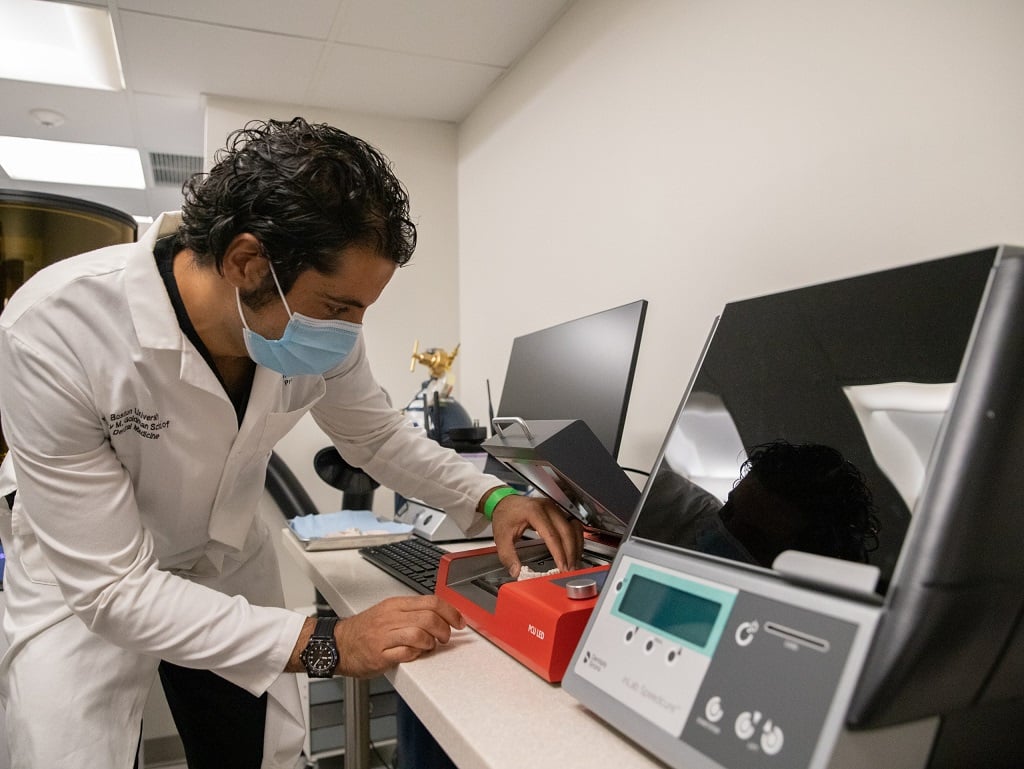
The Henry M. Goldman School of Dental Medicine (GSDM) at Boston University became the first dental school in the U.S.A. to install and implement a Carbon M series 3D printer.
The Rationale
One of the fields that it is the most difficult to implement new technology into is medicine and more specifically dental medicine. The human body is so complex that the development of a suitable new method like 3D printing can be challenging. Considering all of this, what spurred Boston University to make the leap and invest in a new system — and was it worth it?
The Dean, Jeffrey W. Hutter, comments:
“The collaboration with Carbon is the latest example of our school’s innovative approach to developing strategic partnerships with leading technology and oral healthcare companies. These partnerships ensure that our school maintains and, indeed advances, our preeminence in digital dentistry and cutting-edge technology.”
He’s not the only one who agrees. Hesham Nouh — the associate chair of General Dentistry, clinical associate professor of General Dentistry, and director, Predoctoral Prosthodontics and Restorative Dentistry — believes that the 3D printer again shows how GSDM encourages out-of-the-box mindsets in students when it comes to technological advancements and innovation.
He says:
“We [also] have the option of creating a lot more designs, because we can design everything digitally and print it . . . so we have more freedom to expand what we’re doing currently.”
The 3D Printer
The Carbon 3D printing system that GSDM has welcomed is already in use in many large-scale production companies like Adidas, Riddell, CCM Hockey, Ford, Lamborghini, and in the healthcare industry. Carbon has been specifically targeting the dental industry, as well, as the 3D printer is able to produce about 20 dental models in 2 hours. That, they note, is over 7 times more efficient than the time it would take on a desktop-sized computer.
The 3D printer is expected to integrate into existing digital dentistry workflows like surgical guides and digital dentures. This, GSDM says, will allow the school to go “fully digital” when it comes to the 3D printing of dental models, aligners, and dentures. It aims to benefit all students, predoctoral or postdoctoral, as they will be allowed to use the printer while supervised by dental technicians and faculty, alongside materials that have been approved for use in the dental industry.
Carbon already has partnerships in the oral healthcare world, like with Dentsply Sirona, and is beginning to make its appearance on the educational aspect of medicine as well. The school hopes to further the depth to which students can explore the curriculum and patient care with the help of this new tool.
My Opinion
Although no longer practicing, my mom’s background is in dentistry with a focus in orthodontics. Because of this, I remember as a child, being fascinated by all the structures and models she brought home with her. Little did I know, they were a mountain of work to create and store safely. I think that generally speaking, the medical industry seems intimidating, because every doctor has such a difficult task and a huge amount of responsibility on their shoulders. When they are equipped with the right tools, they can help more patients at a faster pace, while being able to provide each of their patients with affordable and customized care.
In comparison to literally every other part of us, our teeth are so unique, because no two people have the exact same mouths, whereas even things like casts and braces can be similar to some extent. The Carbon 3D printer will allow both doctors and patients to have more freedom in terms of modelling and creating, allowing the patient to have the best user-experience possible.
As Nouh puts it quite well:
“I say, let’s revolutionize dental education. Let’s revolutionize how we typically believe dentist should be taught, and teach it with all the new technology that is available to us — not only will it make us better at what we do, but it is also going to give our future dentists tools that, whether they use them today or tomorrow, will allow them to provide the best oral healthcare possible to their patients and in so doing, become more successful.”
